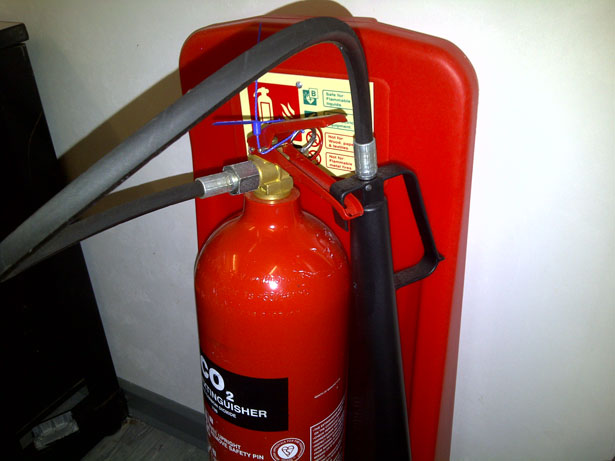How To Prevent Caffeine Tolerance

If you’re wondering how to prevent caffeine tolerance, you’ve come to the right place. Listed below are some of the best ways to avoid developing this condition. You can also learn about caffeine pills via MalePatternFitness. These methods range from reducing your consumption to drinking coconut water. The best way to prevent tolerance to Caffeine is to drink energy drinks only when you genuinely need them. Instead, choose the time of day you’d like to have these drinks.
Reducing caffeine intake
If you’re constantly drinking coffee or consuming energy drinks, you may have built up a tolerance to Caffeine. Then it would help if you increased your caffeine intake to achieve the same effect. Thankfully, there are ways to avoid caffeine tolerance, and here are a few tips:
First, cycle your caffeine intake. If usually drink large amounts of coffee or tea, reduce your information on other days of the week. For example, if you mostly drink an amount nearby four cups of coffee in the morning, drink two the next day. Or, if you typically drink one cup in the evening, only drink one cup. Also, eat a light meal before drinking Caffeine, as skipping meals can lead to low energy levels and cravings for extra Caffeine.
One of the best ways to prevent caffeine tolerance is to reduce caffeine intake. Caffeine tolerance develops after about three to five days of regular consumption. Physiological changes in the brain increase the body’s ability to process Caffeine. This leads to fatigue, and the effects of Caffeine are diminished. However, you can regain your energy after two weeks by gradually reducing your caffeine intake. But be aware that you may experience withdrawal symptoms and jitters. This is a normal response to the stimulant.
Regardless of age, you should know that your body is uniquely adapted to Caffeine. Consume a cup of coffee or soda early in the morning. You’ll still have traces of it in your body at 1 p.m. Caffeine’s half-life is approximately five hours, which means that even if you’ve had a high caffeine intake earlier, it may not be as effective when you first start drinking coffee or soda.
A gradual reduction in the amount of coffee or energy drinks you consume will help prevent the development of caffeine tolerance. Cutting your caffeine intake can be challenging, and many people find it difficult to stop completely. Withdrawal symptoms can include headaches, shakes, and nervousness. But the good news is that this condition is temporary and can be overcome. While caffeine withdrawal symptoms are unpleasant, they will soon subside.
Studies show that 400 milligrams of caffeine per day may be safe for most adults. That’s equivalent to four cups of brewed coffee or about 10 cans of cola. Drinking less than that amount is also safe if you’re breastfeeding, using oral contraceptives, or taking certain medications. For more information like this- how much Caffeine is safe, visit the Coffee Chemistry website. You’ll soon find that you’re not a caffeine addict!
That is how caffeine works- they block adenosine receptors in the brain, which inhibit the release of certain brain chemicals. One of these chemicals in the brain is dopamine, which promotes awakeness. Caffeine blocks adenosine receptors and causes an energy burst. This effect is seen in early studies on animals. Few modern studies use humans as test subjects due to the harmful side effects of Caffeine.
Drinking coconut water
Consuming coconut water is an excellent way to keep yourself hydrated and is rich in electrolytes. Coconut water has a sweet flavor, particularly appealing to those who love their coffee sweetened. While drinking coconut water may not help you prevent caffeine tolerance, it can reset your patience if you drink it sparingly. If you become sensitive to Caffeine, follow the tips below to reset your tolerance.
While some people are concerned about the effect coconut water has on blood sugar, it is a natural beverage. While the sugar content may affect the blood sugar level in your body, it contains potassium, which is necessary for proper fluid balance and normal cellular function. If you are concerned about the impact, coconut water will have on your blood sugar levels, consider drinking coconut water instead of a sports drink. In addition to its health benefits, coconut water is a safe drink for most adults and has few known side effects.
Coconut water is an ideal beverage for rehydrating after a long day at work. Not only does it help your body maintain its average level of potassium, but it also contains several other vitamins and minerals. In addition, coconut water has a high amount of magnesium, potassium, and vitamin C. You can use coconut water in addition to soda and other beverages to stay hydrated and healthy. Just remember to make sure you get enough of it.
While coconut water contains beneficial compounds, it is not a good choice for people who cannot burn off the calories in their coffee or soda. It’s best to stick to unflavored coconut water if you don’t want to put your health at risk. Moreover, unflavored coconut water contains only one-third of the sugar of orange juice and 50 percent fewer calories. Compare that to the typical fruit juice containing twice as many calories.
When you have successfully avoided the adverse effects of coffee, you can move on to the next phase. This is delicate but vital. You need to avoid making the same mistakes you made in the first attempt. To make it easier, try replacing carbonated drinks with coconut water, which may be an excellent alternative to soda and coffee. But consult your doctor or physician before you start drinking it. It is best to avoid Caffeine for the first two weeks.
Coconut water has similar properties as plain water, although it contains more potassium than soda or sports drinks. When consumed during exercise, it helps the body absorb nutrients better. In addition, coconut water is rich in trace minerals, which can help prevent the build-up of caffeine tolerance. Besides being a healthy beverage, coconut water may also help prevent the occurrence of caffeine-related disorders, such as heart disease. it should, thus, be noted that the study did not consider how much Caffeine it contains.
Consuming less
To reverse the process of caffeine tolerance, start by gradually decreasing your daily intake. You can do this by tapering off gradually over several weeks or going cold turkey. According to Joseph Rivera, a registered dietitian nutritionist and founder of Coffee Chemistry, you should cut back on your daily caffeine intake by 50%. Then, reduce it further by having it for another few days. Gradually your body will start adjusting to the new lower daily dose.
Some people build up a tolerance much more quickly than others, which can lead to dangerous side effects. Caffeine consumption can be reset by gradually decreasing the amount to prevent caffeine tolerance. For example, if you had been drinking five cups of coffee daily, you wouldn’t feel the same after three or four. The same principle can be applied to cutting back on coffee. You shouldn’t consume more than 400 mg of Caffeine daily for healthy individuals without pre-existing health conditions. However, talk to your healthcare provider if your intake is higher than this amount.
Your body needs energy. Food is nature’s energy booster, and reducing caffeine consumption can help you regain power. Eating several meals a day is also helpful in resetting your tolerance. Make sure to eat various fruits, vegetables, and carbohydrates throughout the day. This will help you to regain energy quickly. Consuming less Caffeine is the best way to maintain an average energy level and prevent caffeine dependence.
Drinking Caffeine has many health benefits. It increases the production of brain chemicals known as dopamine and serotonin. However, it also increases blood pressure and can lead to diabetes. To counter this effect, you should limit caffeine consumption to less than one cup daily. However, the results of Caffeine will wear off over time. It will help if you avoid smoking, as this increases the amount of Caffeine in your body. This way, you can keep your blood sugar level stable and avoid developing a caffeine tolerance.
Another way to prevent caffeine tolerance is to cycle your daily consumption. While you may want to drink the same amount of Caffeine on several days, try to cut back on your daily consumption on the other days. Alternatively, drink two or one cup of coffee the next day. By following this simple procedure you’ll be able to avoid forming a caffeine tolerance and get the benefits you need. When you become accustomed to a certain amount of Caffeine, it can make it difficult to cut back on your intake.
Although there is little scientific evidence on the development of caffeine tolerance, many people do experience the effects of Caffeine differently. Withdrawal symptoms may include headaches, nervousness, fatigue, and mood swings. Caffeine withdrawal will generally disappear in a few days. This does not mean it is not at all possible to reduce your caffeine intake. However, you should pay attention to what you’re eating and drinking. Read food labels carefully.




